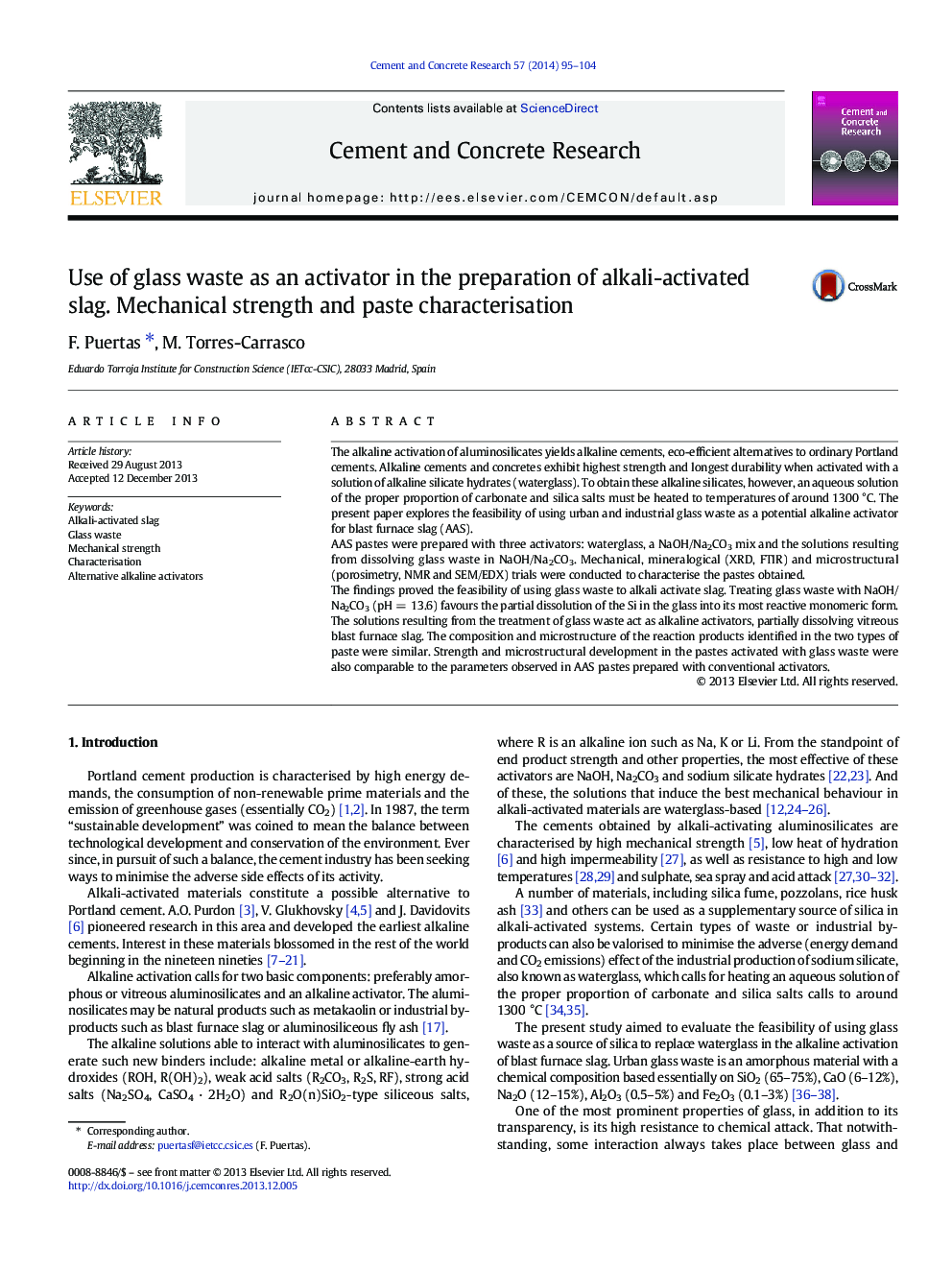| Article ID | Journal | Published Year | Pages | File Type |
|---|---|---|---|---|
| 1456399 | Cement and Concrete Research | 2014 | 10 Pages |
The alkaline activation of aluminosilicates yields alkaline cements, eco-efficient alternatives to ordinary Portland cements. Alkaline cements and concretes exhibit highest strength and longest durability when activated with a solution of alkaline silicate hydrates (waterglass). To obtain these alkaline silicates, however, an aqueous solution of the proper proportion of carbonate and silica salts must be heated to temperatures of around 1300 °C. The present paper explores the feasibility of using urban and industrial glass waste as a potential alkaline activator for blast furnace slag (AAS).AAS pastes were prepared with three activators: waterglass, a NaOH/Na2CO3 mix and the solutions resulting from dissolving glass waste in NaOH/Na2CO3. Mechanical, mineralogical (XRD, FTIR) and microstructural (porosimetry, NMR and SEM/EDX) trials were conducted to characterise the pastes obtained.The findings proved the feasibility of using glass waste to alkali activate slag. Treating glass waste with NaOH/Na2CO3 (pH = 13.6) favours the partial dissolution of the Si in the glass into its most reactive monomeric form.The solutions resulting from the treatment of glass waste act as alkaline activators, partially dissolving vitreous blast furnace slag. The composition and microstructure of the reaction products identified in the two types of paste were similar. Strength and microstructural development in the pastes activated with glass waste were also comparable to the parameters observed in AAS pastes prepared with conventional activators.
